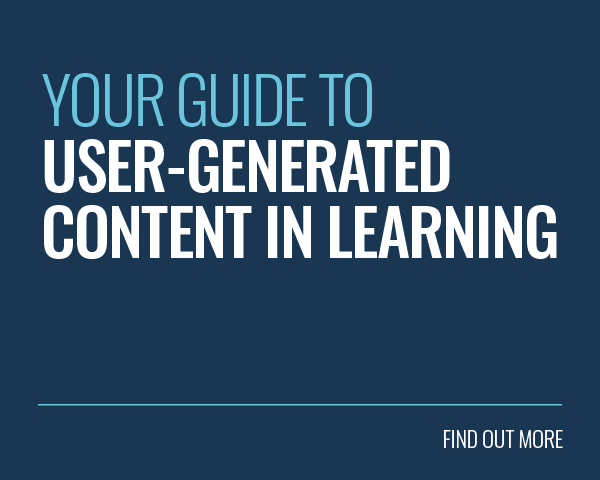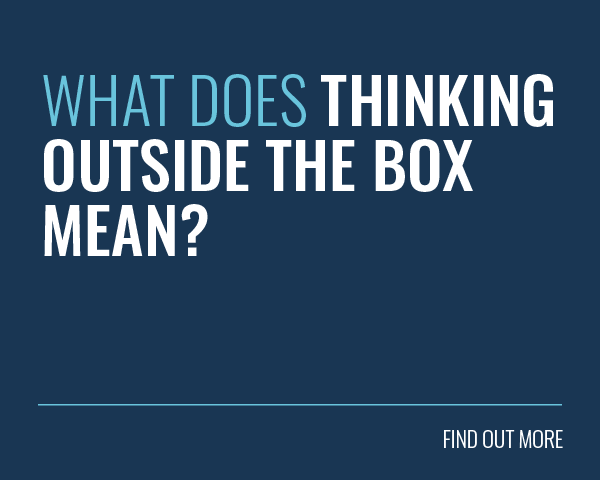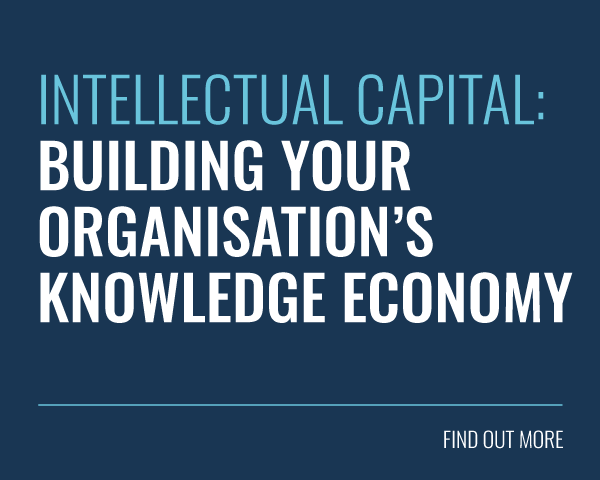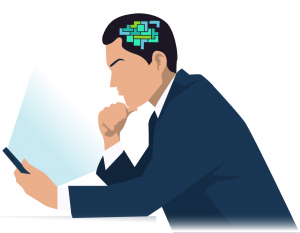
We often talk about how social learning is one of the keys to an effective and engaging training strategy. Humans love to do things with other people and it’s usually a sure-fire way to make a task more exciting.
However, people often overlook the neuroscience behind social learning. What processes occur in our brains to make it such an effective and enjoyable approach?
Well, we’ve got the answers. Various experts have put in countless hours to better understand the inner workings of our brains. In this article, we’ll delve into their research and tell you exactly why we love learning as a collective.
So without further ado, let’s dive in!
What Is Social Learning?
First off, let’s backtrack a little bit. Social learning theory was introduced by the psychologist Albert Bandura in the 1960s. People have used the theory worldwide ever since!
Bandura discovered that humans like to learn more when we’re with others. That’s because humans learn through imitating other people’s behaviours. Additionally, we like being able to bounce ideas off each other and having discussions. Thus, social learning encourages a knowledge sharing culture and improved collaboration. Benefits like these save businesses around $31.5 billion a year and improve employee retention.
The benefits of social learning are further amplified with learning technology. Social learning is a common theme in online learning solutions, such as The Academy LMS and The Knowledge Arcade. Their features mirror common social media elements. This encourages familiarity and an increase in engagement. These are features such as social streams and Live Chat (or instant messaging) functionality.
For our clients, the average user posted on their learning app’s social feed nine times a week in 2020. Engagement with social features also caused a 20% increase in sales revenue for territories using the app. That’s some serious ROI!
But what internal mechanisms are driving this engagement? You need to know so you can effectively select which learning features will best appeal to your learners. On that note, let’s get into the neuroscience of social learning!
1. Social Needs

Research that demonstrates how social connections are vital to human survival is rapidly increasing. For example, UCLA professor Matthew Lieberman is one of the key researchers of social cognitive neuroscience. This area of study uses neuroscience to explain the mental processes that create and frame our response to the social world.
Lieberman is definitely someone you can trust to weigh in on the neuroscience of social learning. He has stated that ‘being socially connected is our brain’s lifelong passion’. Lieberman also notes that our evolutionary process made social bonds essential to humans: ‘it’s been baked into our operating system for tens of millions of years’.
He has even challenged Abraham Maslow and his famous hierarchy of needs. This theory of motivation lays out the five categories of human needs that dictate human behaviour. Physiological needs like water or shelter rest at the bottom of Maslow’s hierarchy. These are seen as most important. Social needs are in the ‘Love / Belonging’ category which is at the third stage of his theory. In his TED Talk, Lieberman reworks the theory and places social needs at the bottom of the pyramid.
He explains that mammals require social connection to survive from infancy and this stands true for the rest of their lives. That’s why creating social connections in learning usually has such an impact.
Social learning feels more innate than learning by ourselves. So if you implement it, relationships between colleagues improve as well as communication. This leads to other benefits like a 25-35% increase in productivity and improved collaboration.
2. Learning and Emotions

Looking deeper into human emotions helps us to understand the neuroscience of social learning. Emotions have a large impact on human cognitive processes such as learning, problem solving and memory retention. The brain’s prefrontal cortex is responsible for our emotions as well as our memories. Therefore, a link between the two is natural.
Studies have shown that emotions play an important role in attention given and motivational action. In other words, the more positive your emotions are, the more attention you’ll pay. Additionally, the more intrinsically motivated you’ll become. Because of this, emotions become intimately linked to learning processes. Emotions also aid in efficient retrieval of information, which of course increases knowledge retention.
In fact, our working memory has been shown to be impaired by negative emotions, such as fear and anxiety. Thus, as we feel more positive emotions such as increased trust and enjoyment, our memory retention levels improve. Indeed, a study of 991 participants revealed that individuals with higher levels of positive emotions had less memory decline over time.
There’s rarely any learning process without emotions. Social learning is no exception. Social contexts often promote emotional responses, whether they’re positive or negative. For example, research shows that worry has a negative impact a school environment. That’s because it absorbs more attention and negatively affects memory recall. On the flip side, some studies demonstrate that positive emotions facilitate learning and contribute to academic success.
By building social learning programmes that fuel positive emotions, we can pave the way for more effective learning. This is known as social emotional learning (SEL). It starts early on and is an integral part of education and human development. People with stronger social-emotional skills are better equipped to deal with professional and social challenges. Building caring relationships with teachers and other students also increases the desire to learn. That sounds perfect to us!
3. Social Learning and Neurotransmitters
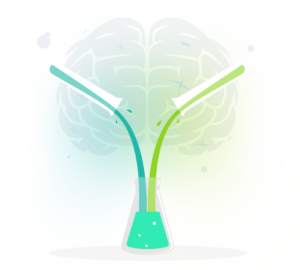
People often refer to neurotransmitters as the body’s chemical messengers. They’re important for balancing signals in the brain and for keeping the brain functioning. They also have psychological functions such as learning and managing emotions!
The main neurotransmitter at play when it comes to learning is called oxytocin. It’s often called the ‘love’ hormone! Oxytocin is famous for cultivating feelings of trust and nurturing relationships. High levels of trust at work can result in a 50% increase in productivity and a six-fold increase in engagement.
Trust can be nurtured through the use of social elements in a gamified training programme. This could be things like engaging with people’s posts on social feeds or sharing common interests in specific Clubs. Even challenging each other to knowledge Battles can help to create a closer bond amongst learners.
The brain produces oxytocin when employees feel a sense of higher purpose in their jobs. We like to call this Epic Meaning. It’s all about making sure to lock employees into a goal. They also need to feel that their work matters. Here’s what Paul J. Zak, the founding director of the Center for Neuroeconomics Studies, has to say on this topic:
‘Trust and purpose then mutually reinforce each other, providing a mechanism for extended oxytocin release, which produces happiness.’
He goes on to reveal that the correlation between trust reinforced by purpose (1) and joy at work (2) is incredibly high (0.77). This links nicely to the production of another neurotransmitter – dopamine.
Dopamine is known as the ‘feel-good’ hormone and is an important part of our internal reward system. Dopamine is triggered when we receive things like ‘likes’ or a reply on social feeds and creates positive associations with learning. This stimulates engagement and a desire to return to the platform. Dopamine is also great for increasing motivation, which can save companies up to $550 billion annually.
The release of neurotransmitters like oxytocin and dopamine while using social learning features plays an important role in learner satisfaction. Satisfied learners have higher memory retention levels, which results in true business impact.
4. Mirror Neurons
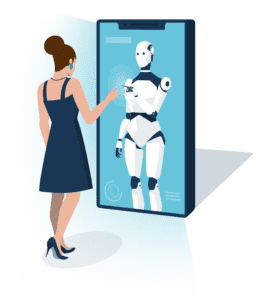
In the 1990s, scientists made a breakthrough and discovered ‘mirror neurons’ in the brains of monkeys. To get more specific, they were found in the ventral premotor cortex (area F5).
The discovery of mirror neurons was exciting because it led to a new way of thinking about how our actions are generated. This rings especially true for research into the neuroscience of social learning and how we monitor the actions of those we observe.
Scientists noted that mirror neurons fired as one monkey watched the actions of another. For example, if a monkey (or human) watches another use a hammer, it’s able to copy them and learn how to use it itself. We ‘mirror’ the actions of others and learn without having to find out for ourselves.
For an informative and lively summary of mirror neurons, watch this TED Talk by neuroscientist Vilayanur Ramachandran!
Since the discovery, people have endlessly debated whether these magical neurons are also present within the human brain. Various studies have found neurons with similar properties in our brains. However, some critics say that the data is still inconclusive. The debate has become one of the hottest topics in all of neuroscience!
Later studies have shown that newborn babies are able to imitate the body movements of other people. This can happen as early as 40 minutes after birth. That means that before an infant even sees its own face in a mirror, it’s able to mirror other human’s behaviour.
If mirror neurons do in fact exist within our own brains, then it would explain why we love social learning. Their presence would clarify it’s so easy to learn from other people through observing and copying their actions.
5. Learning Socially
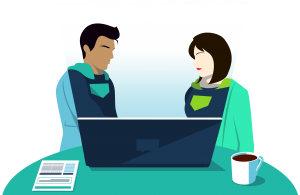
Psychology professor Louis Cozolino sums this all up incredibly well. He claims that ‘the brain is a social organ’. The brain requires connections with others to thrive. A review of 148 studies with 308,849 participants indicated that those with stronger social relationships had a 50% increased likelihood of survival.
The modern human brain’s primary environment is our matrix of social relationships. Therefore by building close relationships, we can stimulate positive emotions, neuroplasticity, and learning.
Cozolino also notes that our brains have evolved to pay attention to others. However, we find it much more difficult to analyse ourselves. So through discussions with different people, we’re able to empathise and consider different viewpoints. This helps to build trust and communication, which 89% of employees recognise as extremely important.
Finally, studies show that if you try to use a robot to teach people, their willingness to connect with them is low. The study then found that engagement and knowledge retention increased if you give more social-like behaviours to the robot!
The same goes for learning tech. It’s simply a programme. However, it’s your job to populate it with real people, encourage user-generated content and facilitate social networking. Once you’ve achieved this, your learners become much more willing to learn with an online learning solution!
Final Word
The first step of any learning programme is to successfully engage your learners. You can’t learn about a new product or process if you have no interest in it.
When you fully understand the neuroscience of social learning, you know what features are best for your learners. This helps you to craft the perfect programme and ensure effective learning.
The use of social learning features in our solutions has resulted in supercharged engagement and positive business impact for all of our clients. If you want to find out how you can create an effective social learning programme and forge a knowledge sharing community, then please book a free demo of The Academy LMS today!


